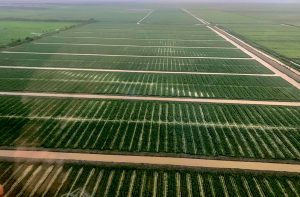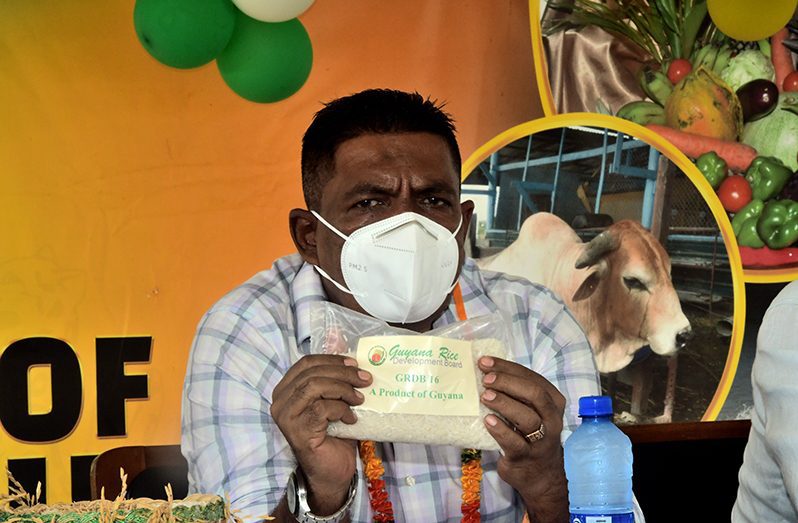— Agriculture Minister
THE Ministry of Agriculture is working to minimise the effects of the current flood on the country’s second rice crop for 2021. Customarily, the May/June period would see rice farmers across the country engaged in preparing their fields and sowing seeds for harvest in October-November.
Agriculture Minister, Zulfikar Mustapha, has confirmed that so far, approximately 30,000 acres of rice have already been sown, with inclement weather threatening the outcome of the intended harvest. The minister said that even though many rice lands are facing threats of being flooded, only a small amount of the current rice crop has been damaged. Mustapha said that another 70,000 acres of rice lands are yet to be sown. “We are doing monitoring,” the minister said.
He explained that, currently, Extension Officers from the Ministry of Agriculture are working along with farmers to minimise damage and safeguard the rice being planted.
“A substantial amount of rice crop that has been sown would be saved, but we still have to wait and see at the end of it all,” Mustapha said.
He noted that various field officers, including those from the National Drainage and Irrigation Authority (NDIA), are tasked with executing daily monitoring. Stemming from this, the Guyana Rice Development Board (GRDB) is tasked with providing daily updates.

“It’s a work in progress,” Mustapha acknowledged.
He said that in some areas along the Mahaica/Mahaicony district, flood waters have started to recede as a result of aggressive drainage monitoring and action. “We just visited Big Biaboo, and we made a number of interventions that have already been implemented,” the minister posited.
He explained that once the May/June season passes, rice farmers will not be able to participate in the second rice crop, thereby affecting the outcome of the second rice crop for 2021, and the country’s economy as a whole. Guyana’s rice industry has always been a leading income earner for the country. In 2020, the industry raked in US$236.2 million, which accounts for more than G$51 billion. This earning came from the exportation of 574,312 tonnes of paddy, rice and its by-products for that year. During January-December 2020, Guyana exported rice and rice products to 40 countries, with the major buyers being Jamaica, Trinidad, Belgium, Holland, France, Italy, Poland, Portugal, Spain, the United Kingdom, Columbia, Haiti, Honduras and Venezuela.
As far as this year goes, Guyana was previously expected to be able to export 649,480 tonnes of paddy, rice and its by-products, valuing close to US$ 257.3 million.
The Agriculture Ministry was hopeful that Guyana’s newest rice variety, the GRDB16, has the potential to increase Guyana’s rice output significantly, having possessed the potential of producing up to nine tonnes or 60 bags per acre.
As it is, Minister Mustapha said that all efforts are being made to minimise the flooding, and support rice farmers who have been affected, and who are likely to be affected as the inclement weather persists. “We are monitoring the situation closely,” the minister said.
He explained that, presently, farmers are being advised and updated based on the projected “timeline and forecast” being garnered from the country’s Hydrometeorological Service.
“We are trying our utmost to ensure we bring back some form of normalcy,” the minister assured.




.png)









